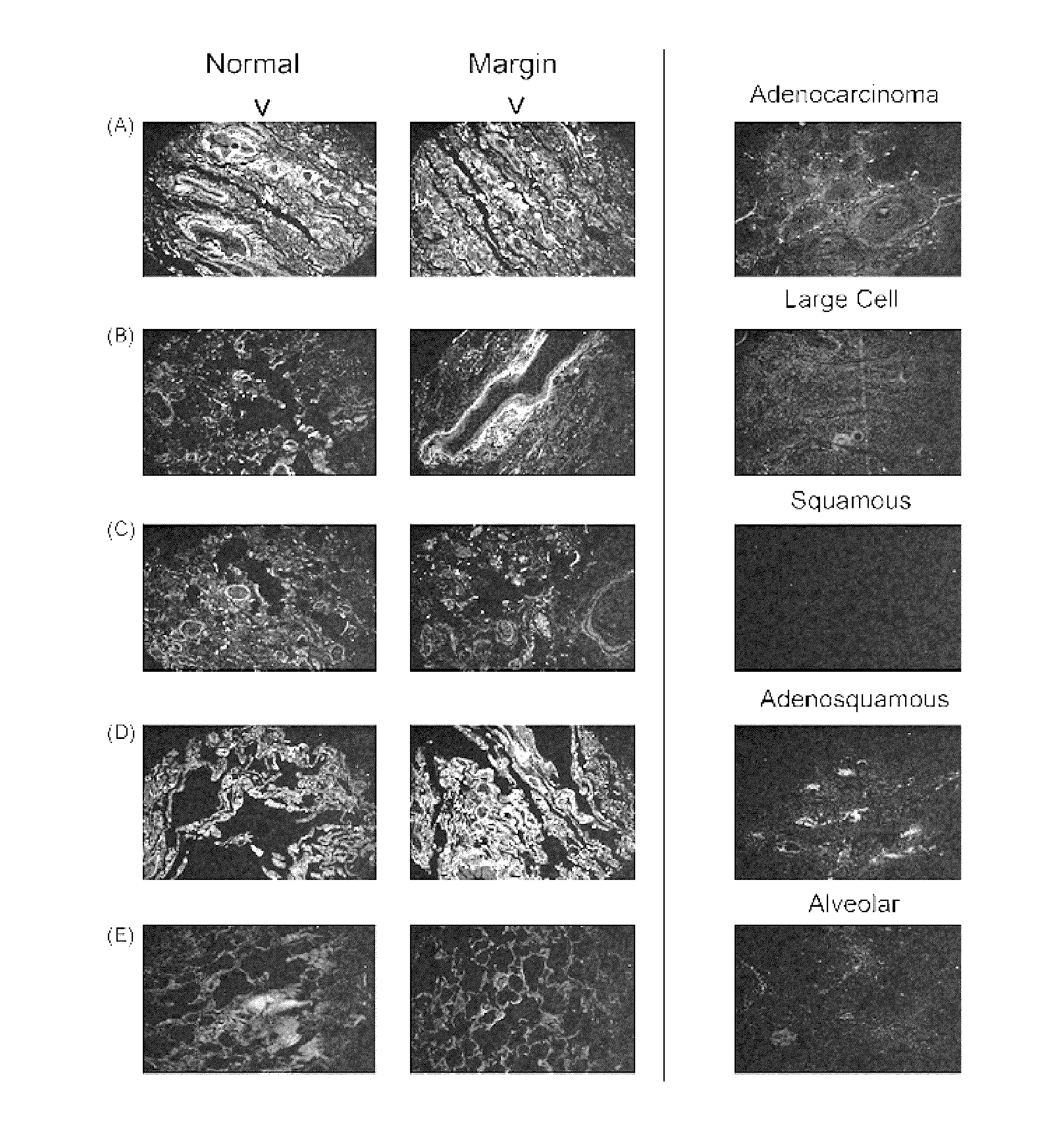Lipocalin-type prostaglandin d2 synthase as a biomarker for lung cancer progression and prognosis
a prostaglandin and lipocalin technology, applied in the field of biomarkers, can solve the problems of dampening the initial excitement of using cox-2 inhibitors as practical chemopreventives, and achieve the effects of avoiding substantial toxicity to the subject, improving pgd2 levels, and improving treatment
- Summary
- Abstract
- Description
- Claims
- Application Information
AI Technical Summary
Benefits of technology
Problems solved by technology
Method used
Image
Examples
example 2
[0125]L-PGDS knockout mice were originally obtained from the Osaka Bioscience Institute (Osaka, Japan). Eguchi N, Minami T, Shirafuji N, Kanaoka Y, Tanaka T, Nagata A, Yoshida N, Urade Y, Ito S, Hayaishi O, “Lack of tactile pain (allodynia) in lipocalin-type prostaglandin D synthase-deficient mice”, Proc Natl Acad Sci USA 96:726-730 (1999).
[0126]Transgenic L-PGDS overexpressors, were purchased from Jackson Laboratories (Bar Harbor, Me.). Hayaishi O, “Molecular genetic studies on sleep-wake regulation, with special emphasis on the prostaglandin D(2) system”, J Appl Physiol 92:863-868 (2002).
[0127]Control C57BL / 6 mice were purchased from Jackson Laboratories (Bar Harbor, Me.).
[0128]Mice are maintained in temperature-controlled rooms (22° C.) with a 12 h light / dark cycle and given access to Rodent Lab Chow, #5001 (Purina, St. Louis, Mo.) and water ad libitum. Experiments are performed on 7-9 week old males housed 4 per cage, in plastic cages with hardwood bedding and dust covers follow...
example 3
[0131]Another aspect of the invention provides a method for intra-tracheal gene therapy for lung cancer treatment. According to this method, a gene vector is produced using adenovirus or SV-40 viral gene delivery technology, for example of the L-PGDS gene, via intra-tracheal delivery, for example. See, e.g, U.S. Pat. Nos. 7,951,785, 7,960,525, 7,943,374, expressly incorporated herein by reference. See also: Acsadi G et al. “Human dystrophin expression in mdx mice after intramuscular injection of DNA constructs.” Nature 352:815-18 (1991); Armentano D et al. “Expression of human factor IX in rabbit hepatocytes by retrovirus-mediated gene transfer: Potential for gene therapy of hemophilia B.” Proc. Natl. Acad. Sci. USA 87:6141-45 (1990); Berkner K L. “Development of Adenovirus Vectors for the Expression of Heterologous Genes.” Biotechniques 6(7):616-29 (1988); Better M et al. “Escherichia coli Secretion of an Active Chimeric Antibody Fragment.” Science 240:1041-43 (1988); Chowdhury J R...
PUM
| Property | Measurement | Unit |
|---|---|---|
| Fraction | aaaaa | aaaaa |
| Permeability | aaaaa | aaaaa |
Abstract
Description
Claims
Application Information
 Login to View More
Login to View More - R&D
- Intellectual Property
- Life Sciences
- Materials
- Tech Scout
- Unparalleled Data Quality
- Higher Quality Content
- 60% Fewer Hallucinations
Browse by: Latest US Patents, China's latest patents, Technical Efficacy Thesaurus, Application Domain, Technology Topic, Popular Technical Reports.
© 2025 PatSnap. All rights reserved.Legal|Privacy policy|Modern Slavery Act Transparency Statement|Sitemap|About US| Contact US: help@patsnap.com



